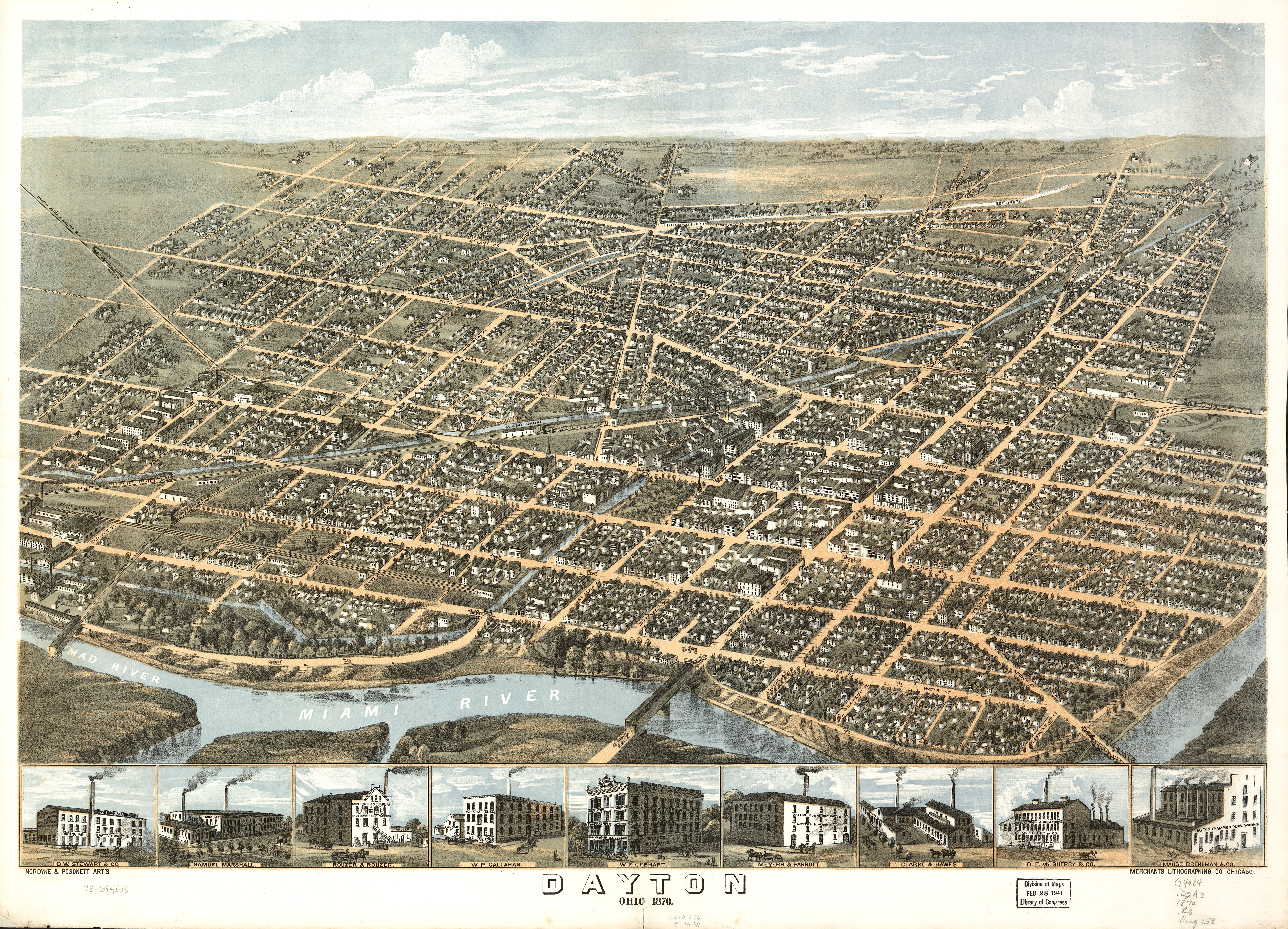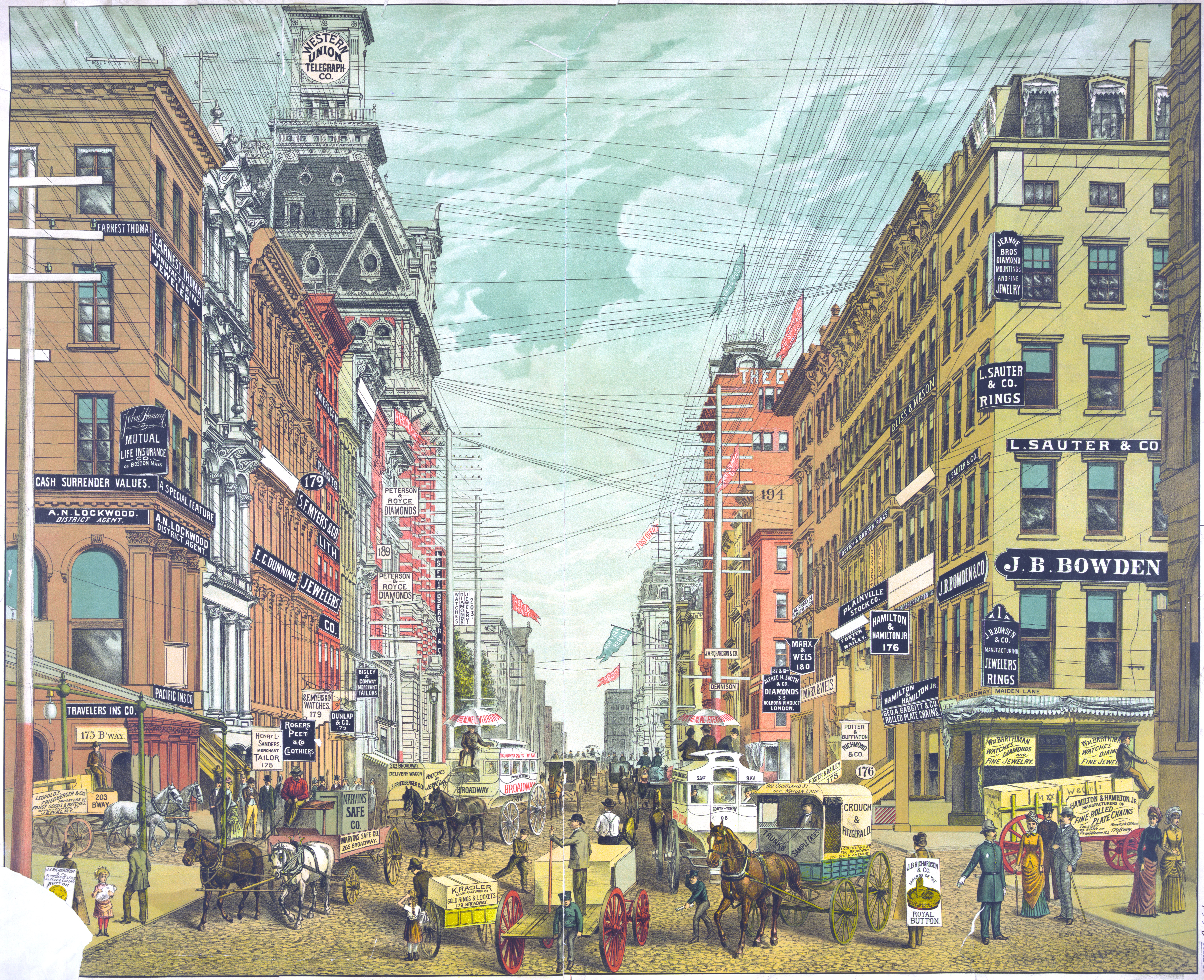|
Kenilworth District, Dayton, Ohio
The Kenilworth Avenue Historic District is a historic district in the northwestern portion of Dayton, Ohio, United States. Composed largely of houses constructed after the Great Flood of 1913, the district features examples of several prominent architectural styles, and it has received both local and federal recognition. Following the 1913 flood, many wealthy residents decided to flee the older parts of the city, located in the floodplain along the Great Miami River. The result was the development of Kenilworth Avenue, whose houses feature a range of design modes, including the Italianate, Tudor Revival, Colonial Revival,Smith, Joanne Huist. "Distinct Homes Date to Dayton's Post-1913 Flood Era". ''Dayton Daily News'' 2006-03-01: B1. and Neoclassical styles. Also known as "Dayton View Heights" (the district is just three blocks north of the larger Dayton View Historic District), [...More Info...] [...Related Items...] OR: [Wikipedia] [Google] [Baidu] |
Dayton, Ohio
Dayton () is the sixth-largest city in the U.S. state of Ohio and the county seat of Montgomery County. A small part of the city extends into Greene County. The 2020 U.S. census estimate put the city population at 137,644, while Greater Dayton was estimated to be at 814,049 residents. The Combined Statistical Area (CSA) was 1,086,512. This makes Dayton the fourth-largest metropolitan area in Ohio and 73rd in the United States. Dayton is within Ohio's Miami Valley region, north of the Greater Cincinnati area. Ohio's borders are within of roughly 60 percent of the country's population and manufacturing infrastructure, making the Dayton area a logistical centroid for manufacturers, suppliers, and shippers. Dayton also hosts significant research and development in fields like industrial, aeronautical, and astronautical engineering that have led to many technological innovations. Much of this innovation is due in part to Wright-Patterson Air Force Base and its place in the ... [...More Info...] [...Related Items...] OR: [Wikipedia] [Google] [Baidu] |
Contributing Property
In the law regulating historic districts in the United States, a contributing property or contributing resource is any building, object, or structure which adds to the historical integrity or architectural qualities that make the historic district significant. Government agencies, at the state, national, and local level in the United States, have differing definitions of what constitutes a contributing property but there are common characteristics. Local laws often regulate the changes that can be made to contributing structures within designated historic districts. The first local ordinances dealing with the alteration of buildings within historic districts was passed in Charleston, South Carolina in 1931. Properties within a historic district fall into one of two types of property: contributing and non-contributing. A contributing property, such as a 19th-century mansion, helps make a historic district historic, while a non-contributing property, such as a modern medical clinic ... [...More Info...] [...Related Items...] OR: [Wikipedia] [Google] [Baidu] |
National Register Of Historic Places In Montgomery County, Ohio
__NOTOC__ This is a list of the National Register of Historic Places listings in Montgomery County, Ohio. This is intended to be a complete list of the properties and districts on the National Register of Historic Places in Montgomery County, Ohio, United States. The locations of National Register properties and districts for which the latitude and longitude coordinates are included below, may be seen in an online map. There are 154 properties and districts listed on the National Register in the county, including 7 National Historic Landmarks. The city of Dayton is the location of 112 of these properties and districts, including 5 National Historic Landmarks; they are listed separately, while the remaining properties and districts are listed here. A single property, the Miami Valley Golf Course and Clubhouse, is split between Dayton and other parts of the county, and it thus appears on both lists. Another 2 properties were once listed but have been removed. Current listin ... [...More Info...] [...Related Items...] OR: [Wikipedia] [Google] [Baidu] |
National Register Of Historic Places Listings In Dayton, Ohio
__NOTOC__ This is a list of the National Register of Historic Places listings in Dayton, Ohio. Current listings Former listings See also * List of National Historic Landmarks in Ohio * National Register of Historic Places listings in Ohio __NOTOC__ This is a list of properties and districts in Ohio that are listed on the National Register of Historic Places. There are over 4.000 in total. Of these, 73 are National Historic Landmarks. There are listings in each of Ohio's 88 count ... References External linksHistoric districts in Dayton {{National Register of Historic Places in Ohio Dayton History of Dayton, Ohio Dayton, Ohio-related lists Buildings and structures in Dayton, Ohio ... [...More Info...] [...Related Items...] OR: [Wikipedia] [Google] [Baidu] |
Steele's Hill-Grafton Hill Historic District
Stage Stores was a department store company specializing in retailing off-price brand name apparel, accessories, cosmetics, footwear, and housewares throughout the United States. Stores were usually located in shopping malls and centers or in standalone locations. The corporate office was located in Houston, Texas. Stage Stores operated 782 department stores in 42 states, almost all of which were eventually converted to their flagship brand, Gordmans, which it acquired in 2017. Historically, Stage Stores operated full-price retail outlets under the Bealls, Palais Royal, Peebles, Stage, and Goody's nameplates before transitioning away from that business model and toward an off-price positioning in 2019 and 2020. On May 11, 2020, Stage Stores announced it had filed for Chapter 11 bankruptcy after failing to find a buyer for the chain. The company had suffered poor sales in the 2019 holiday season, and after the onset of the COVID-19 pandemic and the ensuing retail shutdowns tha ... [...More Info...] [...Related Items...] OR: [Wikipedia] [Google] [Baidu] |
McPherson Town Historic District
The McPherson Town Historic District of Dayton, Ohio, Dayton, Ohio, contains roughly 90 structures north of downtown Dayton, across the Great Miami River. History Tucked into a corner of the horseshoe area formed by a bend in the Great Miami River, McPherson Town was founded on February 1, 1845. On this date, an Irishman named Samuel McPherson filed a plat consisting of 34 swampy, wooded lots on both sides of Dayton and Covington Turnpike. The center of this plat was located at the present-day North Main Street. and McPherson Street. McPherson Town and much of Dayton were devastated by the flood of 1897 and the Great Dayton Flood of 1913. Many homes were destroyed or badly damaged. Current residents still find pounds of flood mud in walls and ceilings during renovation projects. In the years following World War II, many Dayton residents moved to the suburbs. After years of neglect, the McPherson Town area was slated for bulldozing and urban renewal. Residential property was pur ... [...More Info...] [...Related Items...] OR: [Wikipedia] [Google] [Baidu] |
National Park Service
The National Park Service (NPS) is an agency of the United States federal government within the U.S. Department of the Interior that manages all national parks, most national monuments, and other natural, historical, and recreational properties with various title designations. The U.S. Congress created the agency on August 25, 1916, through the National Park Service Organic Act. It is headquartered in Washington, D.C., within the main headquarters of the Department of the Interior. The NPS employs approximately 20,000 people in 423 individual units covering over 85 million acres in all 50 states, the District of Columbia, and US territories. As of 2019, they had more than 279,000 volunteers. The agency is charged with a dual role of preserving the ecological and historical integrity of the places entrusted to its management while also making them available and accessible for public use and enjoyment. History Yellowstone National Park was created as the first national par ... [...More Info...] [...Related Items...] OR: [Wikipedia] [Google] [Baidu] |
National Register Of Historic Places
The National Register of Historic Places (NRHP) is the United States federal government's official list of districts, sites, buildings, structures and objects deemed worthy of preservation for their historical significance or "great artistic value". A property listed in the National Register, or located within a National Register Historic District, may qualify for tax incentives derived from the total value of expenses incurred in preserving the property. The passage of the National Historic Preservation Act (NHPA) in 1966 established the National Register and the process for adding properties to it. Of the more than one and a half million properties on the National Register, 95,000 are listed individually. The remainder are contributing resources within historic districts. For most of its history, the National Register has been administered by the National Park Service (NPS), an agency within the U.S. Department of the Interior. Its goals are to help property owners and inte ... [...More Info...] [...Related Items...] OR: [Wikipedia] [Google] [Baidu] |
Zoning In The United States
Zoning in the United States includes various land use laws falling under the police power rights of state governments and local governments to exercise authority over privately owned real property. Zoning laws in major cities originated with the Los Angeles zoning ordinances of 1904 and the New York City 1916 Zoning Resolution. Early zoning regulations were in some cases motivated by racism and classism, particularly with regard to those mandating single-family housing. Zoning ordinances did not allow African-Americans moving into or using residences that were occupied by majority whites due to the fact that their presence would decrease the value of home. The constitutionality of zoning ordinances was upheld by the Supreme Court of the United States in ''Village of Euclid, Ohio v. Ambler Realty Co.'' in 1926. According to the ''New York Times'', "single-family zoning is practically gospel in America," as a vast number of cities zone land extensively for detached single-family ho ... [...More Info...] [...Related Items...] OR: [Wikipedia] [Google] [Baidu] |
Politics Of Dayton, Ohio
Since its creation as a town in the 18th century, the Politics of Dayton, Ohio have adapted to and reflected the changing needs of the community, from the Miami and Erie Canal through the World War II "Dayton Project" to the present day. City Commissioners The city government of Dayton, Ohio, is governed by a city commission comprising five commissioners, one of whom is the mayor. The commissioners serve staggered, four-year terms. Commissioners are elected two at a time in open, at-large, nonpartisan elections. The four top vote-getters in the primary election go on to compete in the general election, regardless of party membership. The top two vote-getters in the general election are elected. As of November 1969, the mayor is elected in a separate election. Although the elections are nominally nonpartisan, the Democratic and Republican parties nominate candidates. Commission Seats 1 and 2 Commission Seats 3 and 4 1820 to 1828 From 1820 to 1828, Dayton was governed by a ... [...More Info...] [...Related Items...] OR: [Wikipedia] [Google] [Baidu] |




.jpg)